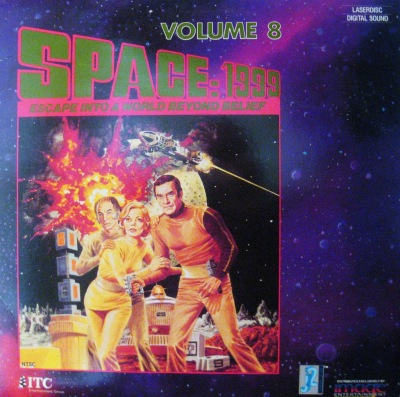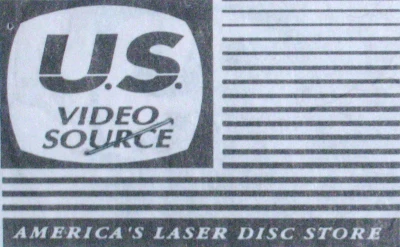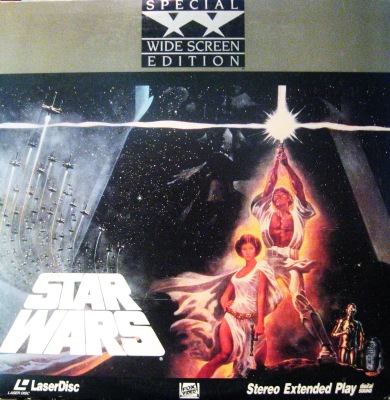Star Trek: First Contact(1996) is likely the finest of The Next Generation feature films. In part, this is so because the film combines an extremely popular villain, the Borg, with an extremely popular idea in the franchise: time travel.
In part, First Contact also thrives because the film is more action-oriented and visceral than some of the other entries in the canon. The screenplay, by Brannon Braga and Ronald Moore also goes through fewer contortions than Generationsdid to fashion its compelling tale. Where Generations seemed confusing and contrived, First Contact feels stream-lined and sleek.
Perhaps most importantly, Star Trek: First Contact – while occasionally gory and quite violent – remembers that the core of Star Trek’s appeal does not rest in warfare and hatred, but rather in the exploration of the “human adventure.”
By ending on the high note of humanity’s first contact with the Vulcans, First Contact honors Star Trek’s important legacy of hope and promise. This vision of a better tomorrow (and of a better humanity, to boot), differentiates the franchise from virtually all other space adventures, and makes the film a pleasure to watch, even fifteen years after its theatrical release. An average Star Trek movie can excite you with space battles, certainly, but only a very good one can tap into the inspirational nature of Gene Roddenberry’s celebrated creation.
Accordingly, film critics approved of and admired the film, and First Contact remains one of the best-reviewed Star Trek films in the saga’s history. Variety wrote: “Star Trek: First Contact”is a smashingly exciting sci-fi adventure that ranks among the very best in the long-running Paramount franchise. Better still, this is one TV spinoff that does not require ticket buyers to come equipped with an intimate knowledge of the small-screen original. Fans and non-fans alike will line up for this wild ride, and many will be repeat customers.”
Lloyd Rose at The Washington Post praised Jonathan Frakes’ direction, and opined “There are moments of visionary beauty in this film that rank with “Metropolis,” with Josh Meador’s interior vistas in “Forbidden Planet” and Irvin Kershner’s and Ralph Quarrie’s work in “The Empire Strikes Back” — that is to say, with the best fantasy films ever made.”
As a reviewer and unapologetic Trek fan, I boast deeper reservations about First Contact than Rose apparently did, and feel that while the film is indeed the best of the Next Generation cinematic efforts, it still falls short of the cinematic majesty and scope of The Motion Picture(1979), or the sheer emotionality and humanity of The Wrath of Khan(1982).
Part of the reason that Star Trek: First Contactdoesn’t work on the same rarefied level as those aforementioned titles is that many of the earthbound scenes involving James Cromwell’s recalcitrant Zefram Cochrane boast no effective foil for the mischievous inventor of warp speed technology. Riker, Troi and Geordi are beloved characters to be certain, but they are never really established effectively in the script as larger-than-life personalities with the heft to match Cochrane note-for-note and blow-for-blow. As a result, the film’s pace lags badly every time First Contact returns to Earth and the Borg are shunted off-screen.
By contrast, the Borg themselves (itself?) are incredibly effective in design, concept and execution. They are visually-inspired, dynamic villains, and First Contact benefits strongly from their presence, even if aspects of their culture (namely the Borg Queen) now seem contradictory and unnecessarily muddled. As a longtime Star Trek fan, I was also disappointed with some of the shoddy continuity in the film, especially because in most cases the flaws were unnecessary and could have been easily rectified in post-production.
But such quibbles aside, Star Trek: First Contactremains a fun and involving science fiction adventure. It’s an eminently sturdy entry in the long-lived franchise, and comes close to recapturing successfully the character chemistry that made Star Trek: the Next Generation so beloved an endeavor.
“A group of cybernetic creatures from the future have traveled back through time to enslave the human race… and you’re here to stop them?”
 In the 24th Century, the cybernetic Borg attempt a second invasion of Sector 001, the home of the human race. Instead of warping to planet Earth to join the battle, however, Captain Jean-Luc Picard (Patrick Stewart) and the U.S.S Enterprise-E are ordered to stay away. Starfleet fears that Picard’s traumatic experience being assimilated by the Borg could make him an “unstable element” in the critical defense of Earth.
In the 24th Century, the cybernetic Borg attempt a second invasion of Sector 001, the home of the human race. Instead of warping to planet Earth to join the battle, however, Captain Jean-Luc Picard (Patrick Stewart) and the U.S.S Enterprise-E are ordered to stay away. Starfleet fears that Picard’s traumatic experience being assimilated by the Borg could make him an “unstable element” in the critical defense of Earth.
With his crew’s support, Captain Picard ignores Starfleet’s orders and assumes control of the fleet battling the Borg Cube. Able to hear the Borg’s thoughts, Captain Picard pinpoints the cube’s weakness and destroys it, but not before a Borg escape craft opens a temporal anomaly and travels into Earth’s past.
Caught in the energetic wake of the escaping Borg sphere, the Enterprise crew can only watch as Earth of the past is assimilated by the cybernetic organisms. The starship follows the Borg to the past, to April of 2063 in an effort to prevent the change. There, they learn that the diabolical aliens plan to scuttle Earth’s “first contact” with alien life forms following the successful test flight of Zefram Cochrane’s (James Cromwell’s) experimental warp ship.
Picard realizes he must preserve the timeline, or the human race will become…Borg.
Before long, the Enterprise herself is infested with Borg invaders. Lt. Commander Data (Brent Spiner) is captured by the Borg Queen (Alice Krige), who requires the information stored in his android brain if she wishes to access the ship’s computer and stop Cochrane’s historic flight.
Meanwhile, on Earth’s surface below, Commander Riker (Jonathan Frakes) must convince Cochrane to make his historic flight…
“I am the beginning. The end. The one who is many. I am the Borg.”
The Borg are really no-brainers as movie antagonists. The most beloved episode of Star Trek: The Next Generation remains the two-parter “The Best of Both Worlds,” concerning a Borg incursion into Federation space. The Borg are such popular villains because they promise a fate much worse than death.
It’s one thing to be killed by drooling, murderous aliens; it’s another thing entirely to have your individuality wiped away and your intelligence sublimated into the Borg Collective. In that state, your memories belong to the Borg. Your physicality belongs to the Borg. Your very soul…is theirs.
Somewhere inside, you may want to struggle against the Collective or Hive, but you can’t succeed. You must stand by and watch in a kind of living Hell as the Borg exploit your knowledge and exploit your body, perhaps even condemning your very loved ones to the nightmare of being “one” with the collective. It’s a horrid fate to imagine, let alone endure.
The Borg threat also works remarkably well in the context of The Next Generation, a series that — through the inclusion of half-Betazaoids, Klingons, androids, the blind and other colorful characters — champions diversity as a worthwhile human ideal.
The Borg destroy diversity, making all life-forms conform to their vision of perfection, thus making them a perfect adversary for our colorful and very individual 24thcentury heroes.
Assimilation into the Borg group consciousness is such a powerful, frightening notion that it would be nearly impossible to ruin the threat of the Borg in a two-hour motion picture. And yet, First Contact almost achieves the impossible by giving the Borg a heretofore unseen new ruler, a single individual called the Borg Queen.
Now, let me be plain: Alice Krige is remarkable as the Borg Queen here. She gives a performance simultaneously terrifying and sensual. Similarly, her appearance is both frightening and incredibly sexy. And yet the very idea of a Borg Queen represents a terrible undermining of the original notion of the Borg: a collective life form.
Now, suddenly – after several years of Next Generation episodes – we learn that that the Borg are ruled by an individual leader? By the equivalent of a Queen Bee? And worse, this Queen Bee is apparently seeking a human mate? Here, it is plain she seeks not to make drones of protagonists Captain Picard or Data, but to make them her lovers and companions, co-rulers of the lower Borg caste.
In one fell swoop, then, the terror and anonymity of assimilation is largely undone. For one thing, the Borg can maintain individuality after assimilation, as the presence and personality of the Borg Queen prove. For another, our heroes don’t face total erasure of individuality. Instead, they get to hob-knob it with the sensual, if sadistic, Borg Queen. There are some humans who may not consider that arrangement so terrible, frankly, given her overt sensuality…
I understand the (flawed) thinking that individuals make a “better” enemy in a movie than a group of bad guys, but the popularity of the Borg as a collective in the Next Generation TV series proves the fallacy of such thinking. First Contact invents a new character in the Borg Queen that — while beautiful and menacing — totally undercuts the terror of the Borg equation.
Her presence raises important questions too. How does the Queen exist in multiple dimensions at once, since First Contact suggests that she was present on the Borg ship with Locutus, although though we never saw her there in “Best of Both Worlds?”
Secondly, and perhaps more importantly, how do the Borg survive (into episodes of Voyager) if their multi-dimensional Queen keeps getting destroyed? How many Queens are there? How does she die? Does Star Trek now possess an un-killable character? Also, because she can apparently be in more than one dimension at a time, why does the Queen have to bother with sending a message to the Borg of her time by sensor dish? Why not just transition from one place to another, one time to another?
Another serious problem in First Contact again comes down to how writers Ronald Moore and Brannon Braga choose to highlight crew interaction. Specifically, superficial “movie thinking” undercuts what could have been incredible scenes of conflict and drama between Enterprise team members.
Here, Patrick Stewart delivers an incredibly well-written Moby Dick speech about the Borg, explaining in detail why he won’t fall back again, why he won’t let the Borg win. Stewart does a terrific job with the material. It’s the monologue of an obsessed, driven man, and it works quite effectively in terms of the character we love, even if it seems logical that he would have exorcised these Borg demons already, given the span of time between “Family” and First Contact.
But forget all that. Picard gets called on the carpet and called out for his obsession with Borg… by Lily (Alfre Woodard), a one-time guest star in the franchise. She goes toe-to-toe with Picard and points out how his pursuit of the Borg doesn’t make sense. She’s known him for maybe a few hours, when she makes the speech.
I’ll be blunt: this confrontation should have occurred between Captain Picard and Dr. Crusher (Gates McFadden). She has known Captain Picard longer than anyone else aboard ship, she can speak from experience — not hear say — that his orders usually make sense, and she boasts the standing as chief medical officer of the Enterprise to stop Picard in his tracks if he is acting in a manner that is dangerous to the well-being of the starship’s crew.
If this were an original cast Star Trek movie, do you have any doubt that it would have been McCoy calling Kirk on the carpet over his behavior, as he did, explicitly in Star Trek: The Motion Picture(1979), Star Trek II: The Wrath of Khan (1982) and Star Trek V: The Final Frontier(1989), to name just three incidents? McCoy could do it because he was Kirk’s confidante, and because he had that standing as CMO to question a captain’s behavior.
Again, Crusher – who shares breakfast with Picard every day as we know from the series – is that person in The Next Generation universe. Yes, Stewart and Woodard are powerful in the confrontation scene together, but it doesn’t resonate deeply in terms of Star Trek history, because Picard doesn’t get checked by one of his own, by one of his crew. These movies are supposed to be about how starship crews work together to resolve problems, right? Shouldn’t the person who actually knows Picard be the one to question him? You may recall, I had a similar problem with how Generations used Crusher. She should have been Picard’s “Nexus” ideal, given their relationship there. And she should do her duty as CMO here, in First Contact. It’s not that I have a thing for Crusher (though I like her just fine). It’s that as a member of the team, when there is an opportunity to use her character appropriately…she should be thus used. And she never is. In any Star Trek movie. Even Chekov, Sulu and Uhura had moments in the sun in the original Star Trek films when there was opportunity.
I’ve always believed this a major flaw in the Next Generation movies: they give the supporting cast members little to do, and farm out the dramatic work to guest stars inside of established characters. The Moby Dick scene would have been infinitely more powerful if Gates McFadden – whom we know and love as Crusher – had been given the opportunity to stand up to Captain Picard. I wrote above how Riker, Geordi and Troi don’t seem equal to the task of countering Cochrane here. The same is true of Crusher in First Contact: she’s written like a doormat. She remains on the bridge, without questioning orders, while Lily enthusiastically performs her job as chief medical officer.
This reveals — as we see time and time again – that there’s definitely a pecking order in the Star Trek: The Next Generation movies: the men get better roles than the women do, and Picard, Riker, Worf and Data get the lion’s share of the drama, while the rest of the characters are afforded only brief moments that play as the equivalent of shtick. Troi gets to play drunk, for example. In First Contact, Crusher not only shirks her duty to hold Picard’s feet to the fire over a bad decision, she actually loses a patient (Lily again…) who is under her protection. That’s the best the writers could come up with for a character who raised a son, overcame the tragic death of her husband, commanded the Enterprise from time-to-time and even headed Starfleet Medical?
In short, for First Contact, the writers decided to go out and invent a woman tough enough to challenge Picard, when a woman already in the Next Generation stable could have done it just as well, and it would have resonated far more with the Trek fan base. All they needed to do was to write Gates McFadden a decent part.
In the introduction to this piece, I wrote about some careless errors in the film. Let me name just a few. At one point, Picard tells Lily the Enterprise consists of 24 decks. Later, Worf’s security chief replacement reports that the Borg control “deck 26.” If we’re to believe Picard, that deck doesn’t exist. By looping “24” over the “26” dialogue, this would error would not have occurred. I just can’t believe that nobody was checking continuity on a major studio’s tent-pole franchise.
Other matters of concern include the origin of Zefram Cochrane. He is a character from the original series episode “Metamorphosis,” and one with an entirely different look and origin (in terms of home planets, apparently) than what this movie establishes. But First Contact feels no obligation to explain the discrepancies in Cochrane’s biography.
Also, since when can Captain Picard hear the voices of the Borg? Is this a common side effect of those who have been separated from the Collective? If so, did Hugh, the Borg refugees of “Descent” and Seven of Nine also hear Borg voices in their heads whenever they encountered them?
In spite of such problems, Star Trek: First Contact is a highly entertaining movie with many dramatic and visually-appealing high points.
Prime among these is the zero-gravity sequence in which Picard, Worf and Hunt must battle the Borg on the exterior of the Enterprise hull, on the main deflector dish. This scene is splendidly-directed, buttressed by incredible special effects, and it features an undercurrent of anxiety throughout, as the Borg – slowly becoming aware of Picard’sinterference – begin to menace the crew as the team works to stop them.
I remember, circa 1994 or so, I was deeply disenchanted with the Star Trekuniverse and consequently looking back at Space: 1999 (1975 -1977) with much appreciation, because I felt that the world of the Enterprise had become too safe and predictable. Space adventuring was no longer dangerous. Now it consisted of vacations on holodecks, endless resources and material wealth, courtesy of replicators, and even families living on the saucer section while exploring the final frontier. I lamented the fact that not once in Star Trek: The Next Generation or Deep Space Nine up to that point, had any main character been seen in a space suit, actually reckoning with the actual environment of space. The crew members of Starfleet seemed to me too insulated from danger.
So I was delighted that Star Trek: First Contact included this zero-g sequence and put my qualms to rest, at least momentarily. The zero-gravity action scene in Star Trek: First Contact reminds us that these men and women are in a dangerous profession, and that even with all the comforts of “technology unchained” in the 24th century, they must still sometimes go out into space with precious few resources to fight enemies, or attempt to repair their ship. The zero-gravity fight scene is actually my favorite in the film because it is so tense, and because it features so many nice character touches, from Picard’s unconventional cleverness (blasting a Borg into space by shooting the deck of the ship…) to Worf’s “always be prepared” mentality, bringing a blade out into space with him. It’s terrific stuff.
I also enjoy the climax of Star Trek: First Contact tremendously because it remembers that Star Trek isn’t always supposed to be about battling hostile aliens. This is one of the reasons why I’m not all that impressed with Star Trek Online. It’s a game about going out to other worlds and fighting aliens, about firing phasers and engaging in battle.
For me, that’s but one small aspect of Star Trek, and not, for me, the one with the most appeal. Star Trek: First Contact features great battle sequences, but more than that, ends on the high note of first contact. It shows us an important and inspiring scene in human history, our first, peaceful meeting with extra-terrestrials. In this case, the humans who broach that contact are fatigued from war, and not “perfect” (like our 24thcentury protagonists). And yet they lead with trust and peace, and a wonderful, new era is opened up because of their willingness to go out on a limb. Frankly, I find the final scenes of First Contact absolutely inspiring, reminding us of the better angels of our nature. We can greet the unknown not with fear, paranoia and suspicion, but with hope and peace and trust.
In ending the film on this high note, rather than the (admittedly-satisfying) defeat of the villainous Borg, First Contact remembers and honors the highest aspirations of Gene Roddenberry and the Star Trek saga. Remember “the human adventure is just beginning?” the tag-line of Star Trek: The Motion Picture? First Contact literalizes that motto, and shows us the wondrous beginnings of man’s odyssey to the stars, beginning with the first moments of brotherhood with another race. It’s a fantastic and inspiring story-point.
I also appreciate the creativity involved in Data’s subplot in First Contact. I didn’t care for how Data was utilized in Generations…as a veritable bi-polar psychotic. Here, he seems more…balanced. He faces temptation as the Borg perform an assimilation in reverse. Usually, the Borg apply mechanical prosthetics to biological skin. Here, they apply biological skin to a mechanical apparatus. It’s an interesting idea, especially since Data suggests early on that he can’t be assimilated by the Borg. The Queen proves him wrong, and in a diabolical fashion that tempts Data. We never really believe he has turned to the dark side…but as Data suggests, a few seconds can feel like eternity when we’re uncertain of his exact motivations.
I understand that Star Trek fans are divided on the subject of Frakes as a director. He gets good performances from the cast here, and manages several action scenes nicely. Judging by First Contact, he certainly seems up to the center seat…the director’s chair.
Between the zero-g action, the up-lifting last moments of first contact, and Data’s unique experience being Borgified, it’s largely futile to resist First Contact, a high-point for theNext Generation cast at the movies.
 Once upon a time, I was certain that the future of home entertainment media belonged to the laserdisc format.
Once upon a time, I was certain that the future of home entertainment media belonged to the laserdisc format.  Laserdiscs were wonderful as well, for their capacity to navigate frame-by-frame (in CAV mode, anyway). They could also feature a host of extras outside the film itself, both on the discs and on the over-sized, record album-like packaging. The laserdisc for Aliens (1986) and The Abyss (1989), for instance, featured extended cuts of the film.
Laserdiscs were wonderful as well, for their capacity to navigate frame-by-frame (in CAV mode, anyway). They could also feature a host of extras outside the film itself, both on the discs and on the over-sized, record album-like packaging. The laserdisc for Aliens (1986) and The Abyss (1989), for instance, featured extended cuts of the film. 




























